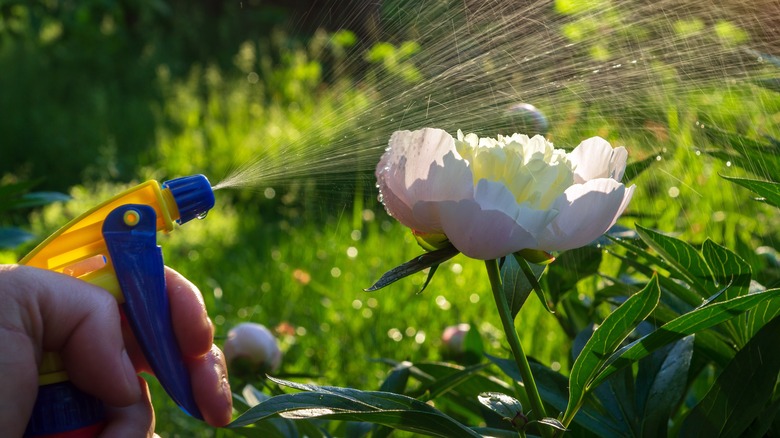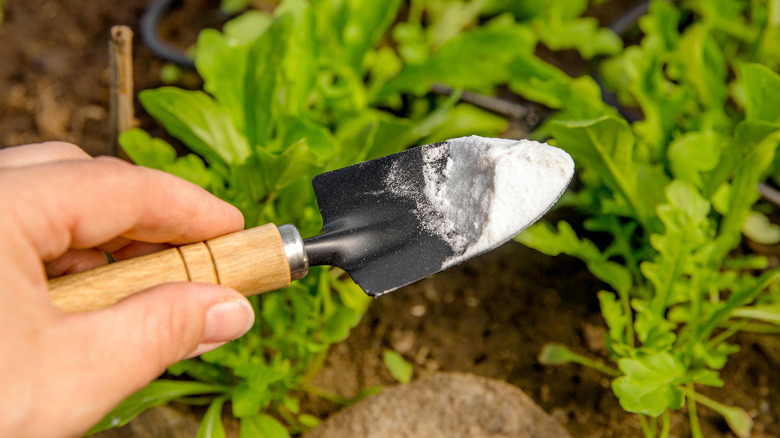This Common Kitchen Ingredient Could Help Keep Your Peonies Happy & Healthy
With bright, fluffy blooms, the peony (Paeonia spp.) is a stunning flower you can plant now and enjoy for decades. While they're generally considered easy to grow, one of the most common issues peonies face is powdery mildew. Luckily, one of the easiest solutions to fight powdery mildew involves ingredients that you probably have in your kitchen right now. Spraying a mixture of baking soda, dish soap, and oil onto your peonies can help prevent powdery mildew from taking over. Fungal spores, like powdery mildew, need a low pH (acidic) environment to grow. Since baking soda is alkaline, spraying this mixture on the leaves of your peonies can raise the pH, making it less hospitable for fungal growth.
There are some important things gardeners should know before using baking soda on plants, though. First, adding oil to the mix is key to making sure that the baking soda can actually stick to the plant well enough to do its job. That's because the water-soluble ingredient washes away easily and doesn't adhere well to stems or the underside of leaves. Another drawback is that high concentrations of baking soda can end up damaging the plant you're trying to save. With that in mind, the best way to use this DIY mildew treatment for your peonies is to create a well-diluted baking soda mixture and to apply it when you first spot signs of disease so you can treat it early.
How to safely fight powdery mildew with baking soda
Check your peonies regularly for signs of powdery mildew, like faint white patches and curling leaves, so that you can start treatment at the first sign of infection. The earlier you catch it, the more likely you are to get it under control with the lower doses of baking soda that are safe for your plant. To treat peonies with powdery mildew, mix 1 tablespoon each of baking soda, liquid dish soap, and horticultural oil to 1 gallon of water. Horticultural oils are refined petroleum or plant-based oils used for pest control. If you don't have any, you can also use mineral oil or any vegetable oil you have on hand. Mist your peonies with this mixture daily for 10 to 14 days.
Since you want to avoid both a buildup of baking soda and having too much baking soda wash away in the rain or from overhead watering, you need to closely inspect your peonies before each treatment. You're looking for signs that the powdery mildew is still spreading even with treatment. But you're also checking for signs of damage, like specks or patches of discoloration and leaf cupping or twisting, that can be caused by excess baking soda. If the powdery mildew is getting worse despite treatment, pinch off the infected leaves or remove the infected plant to prevent it from infecting others. If you see signs of plant damage, cut back treatments to once every two weeks or so.

